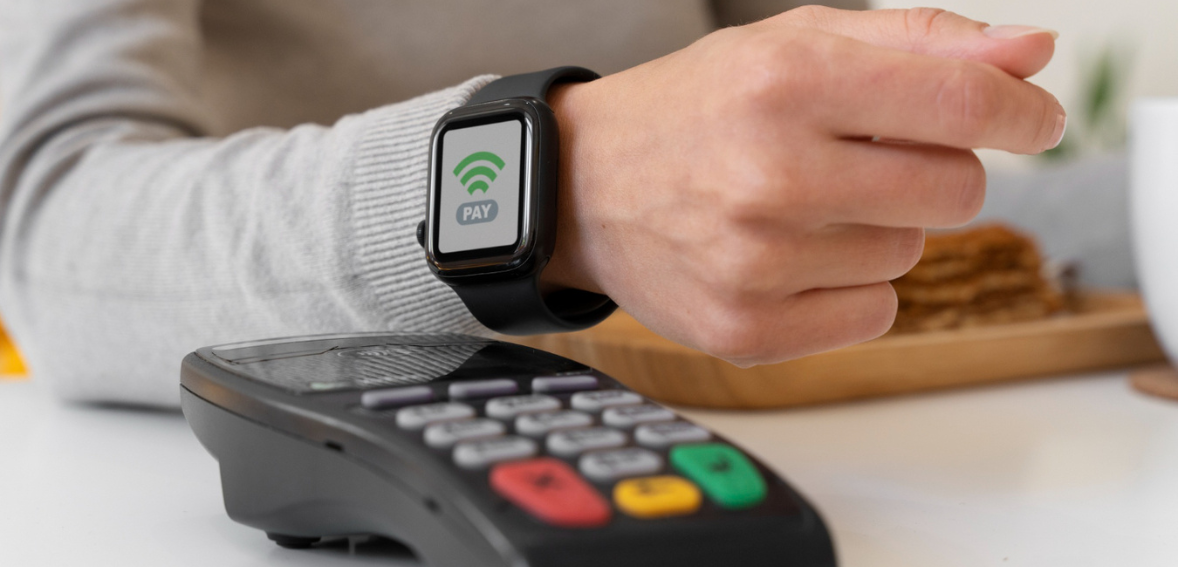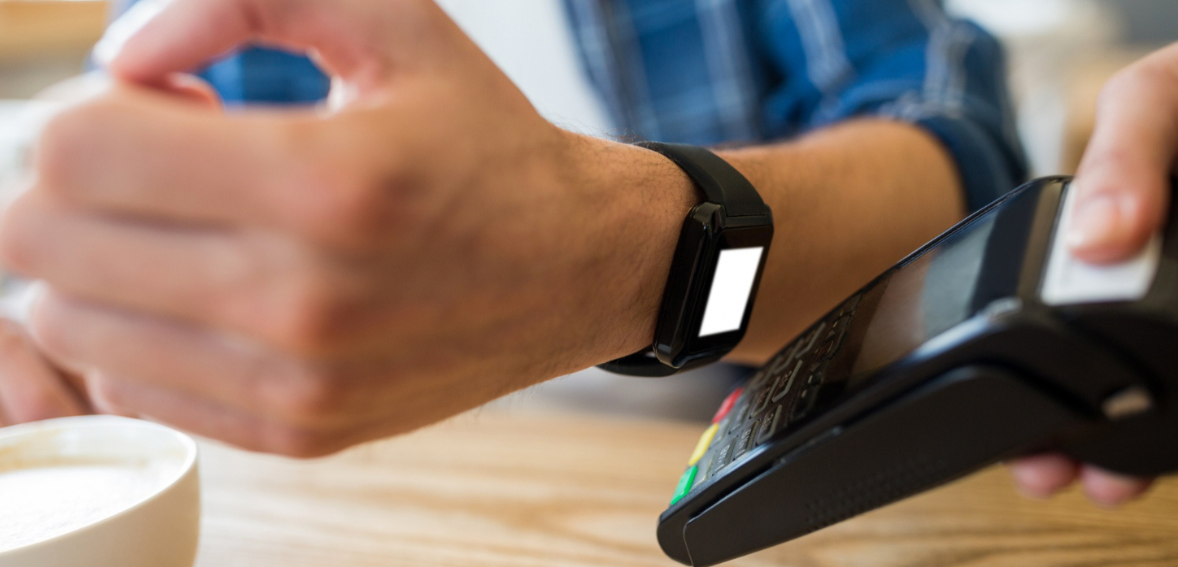
By Bella Zhang September 25, 2025
The modern bakery has always been a place of comfort and community where customers come for bread, pastries and cakes but also for the sense of trust and warmth that fresh food provides. But in recent years expectations around safety and cleanliness have grown. Customers no longer judge bakeries just on the quality of the food but also on their ability to provide a safe environment. Hygiene is now part of trust and one of the biggest changes supporting this shift has been the rise of contactless transaction systems. By offering safe bakery transactions bakeries can meet higher hygiene standards and improve the customer experience.
Bakery hygiene has never been more visible than now with people more cautious about any interaction that involves physical touch. The introduction of contactless bakery checkout systems reduces the need to handle cash or press shared buttons, minimises points of contamination. At the same time it speeds up transactions making bakeries more efficient and appealing. What was once seen as a convenience is now a hygiene standard redefining how bakeries operate and how customers perceive safety in food spaces.
The Importance of Bakery Hygiene
Cleanliness has always been at the heart of bakery operations. From how dough is handled to how displays are maintained, attention to hygiene ensures not just food safety but customer confidence. But in recent years bakery hygiene has taken on a whole new meaning. Customers are more aware of the risks from shared surfaces to physical exchanges at the checkout. This increased awareness puts the onus on bakeries to go beyond basic cleanliness.
Integrating safe bakery transactions into the customer journey is key to this shift. When payment itself becomes part of the hygiene standards bakeries are demonstrating a holistic approach to safety. Offering contactless bakery checkout is not just about keeping food preparation clean but extending hygiene to the very end of the customer experience. This builds trust, customers know every step of their interaction from selection to payment is designed with their well-being in mind.
Contactless Bakery Checkout as a Hygiene Standard
For many bakeries the checkout counter is one of the most frequent points of contact between staff and customer. Traditional cash exchanges or card insertions require physical interaction, which increases the risk of contamination. With contactless bakery checkout, these interactions are minimised or eliminated. Customers can pay by simply tapping their card or mobile phone, making transactions faster and safer.
The connection between hygiene and technology is clear here. By going for safe bakery transactions, bakeries are showing they care about health without compromising convenience. Contactless systems also reduce stress for staff, who no longer have to handle cash constantly or sanitise terminals after every use. So hygiene is maintained seamlessly and the bakery atmosphere remains warm and welcoming rather than clinical. This subtle but powerful shift is helping to redefine what bakery hygiene looks like in the modern world.
Building Customer Trust Through Safety
Trust is one of the strongest currencies in the food business. Customers want to feel sure their favourite bakery is not only delicious but also safe. Implementing contactless bakery checkout systems plays a big part in building that trust. It says to the customer the bakery values their health and is modern. This trust goes beyond the transaction, it influences how the customer views the whole bakery.
By going for safe bakery transactions businesses create a cycle of loyalty. Customers who feel safe are more likely to come back and recommend the bakery to others. Hygiene and safety becomes part of the brand, making bakery hygiene as important as flavour or service quality. In competitive markets this trust is often the deciding factor, especially when customers have multiple options. So investing in hygiene through technology is also an investment in long term customer relationships.
Technology as a Partner in Hygiene
The role of technology in bakeries has expanded far beyond ovens and mixers. Today, digital systems contribute directly to hygiene standards by enabling safe bakery transactions. Contactless terminals, mobile payment apps, and digital wallets all serve as tools that reduce unnecessary contact while keeping operations smooth. This reflects how eco catering practices in other food industries have been mirrored in retail bakeries through smart adoption of hygiene-focused innovations.
With contactless bakery checkout, bakeries can handle higher volumes of customers without compromising safety. The process also aligns with customer expectations, as many people already use mobile wallets and prefer quick, touch-free interactions. By blending convenience with safety, technology ensures that bakery hygiene is upheld consistently, reducing the chances of lapses caused by manual systems. This creates an environment where customers feel protected and efficiency is maintained at the highest levels.
Staff Safety and Morale
While customers are at the heart of any bakery, staff well-being is equally important. Workers in bakeries often handle both food and customer interactions, increasing their exposure to potential risks. By introducing contactless bakery checkout, bakeries reduce one of the main stressors for staff; constant handling of cash and physical cards. This shift creates safer working conditions and improves morale.
Maintaining bakery hygiene goes beyond food preparation areas; it includes protecting employees who are integral to the business. When staff feel safe, their confidence and service quality improve, enhancing the customer experience as well. Furthermore, safe bakery transactions reduce the time spent sanitizing counters and payment devices, freeing staff to focus on customer engagement and food quality. In this way, hygiene improvements benefit both sides of the counter, making bakeries safer and more pleasant for everyone involved.
Streamlining Customer Experience
One of the unexpected benefits of contactless bakery checkout is how much it improves the overall customer experience. Faster transactions mean shorter lines, less waiting, and a smoother flow within the bakery. Customers appreciate not only the safety but also the efficiency that comes with safe bakery transactions. The process feels modern and simple, reflecting positively on the bakery’s brand image.
Efficiency also plays into bakery hygiene, as shorter wait times reduce crowding and physical proximity among customers. This further minimizes risks, ensuring that hygiene is upheld throughout the bakery space. For many, the streamlined experience is a reason to return, proving that safety and convenience are deeply intertwined. By reducing friction at checkout, bakeries enhance satisfaction and stand out in competitive markets.
Sustainability and the Future of Hygiene
As bakeries adopt more technological systems, sustainability becomes part of the conversation. Digital payments reduce the need for paper receipts and physical currency, aligning with broader efforts in eco catering practices. This integration of safety, hygiene, and environmental awareness creates a holistic model of sustainable food service within the bakery industry.
The future of safe bakery transactions will likely involve even more integration with mobile apps, loyalty programs, and personalized customer experiences. As hygiene continues to be a top priority, bakeries that adopt these innovations will remain competitive and trusted. Contactless bakery checkout is no longer just a trend but an essential step toward creating spaces that meet modern expectations. By aligning with both hygiene and sustainability goals, bakeries can lead the way in redefining how food businesses operate in a conscious and customer-first manner.
Educating Customers on Contactless Transaction Benefits
One challenge bakeries face when introducing new systems is ensuring that customers understand their value. Many people are already familiar with mobile wallets and tap-to-pay cards, but others may still prefer traditional methods out of habit. By clearly communicating the hygiene advantages of contactless bakery checkout, bakeries can encourage adoption. Staff can explain how reducing cash handling supports stronger bakery hygiene, assuring customers that safety measures extend to every part of the experience. Visible signage and gentle reminders at the counter also reinforce the message.
As customers become more aware of these practices, their trust in safe bakery transactions grows. Education goes beyond technical instructions; it highlights the bakery’s commitment to community well-being. Customers often appreciate businesses that prioritize safety and transparency, and this awareness can even lead to greater loyalty. When people feel informed and included in the transition, they are more likely to embrace new systems with enthusiasm. This makes customer education not only a practical step but also an opportunity to deepen relationships and strengthen the bakery’s brand identity.

Adapting Payment Systems for All Customers
While contactless bakery checkout has become a standard expectation for many, bakeries must ensure that no customer feels excluded. Some individuals may not have access to smartphones or tap-enabled cards, meaning flexibility is still essential. A balanced approach includes offering multiple options while encouraging digital adoption for hygiene reasons. By doing this, bakeries maintain inclusivity while still highlighting the benefits of safe bakery transactions.
At the same time, bakeries can guide customers toward digital solutions by making them more convenient and efficient than cash-based alternatives. Small incentives such as loyalty points or faster service for contactless payments can gradually shift preferences. This inclusive approach strengthens bakery hygiene because more people adopt touch-free options without feeling pressured. Ultimately, adapting systems to support both traditional and modern methods ensures a smooth transition, protects customer relationships, and broadens the reach of hygiene-enhancing payment solutions. The result is a more inclusive, adaptable, and safe environment that reflects the bakery’s understanding of customer diversity.
Financial Security Alongside Hygiene
Beyond hygiene, safe bakery transactions also strengthen financial security. Cash handling carries risks not only of contamination but also of theft, loss, or error. By moving toward contactless bakery checkout, bakeries reduce these vulnerabilities. Digital payments automatically record transactions, creating a reliable system that benefits both customers and business owners. This transparency adds another layer of trust, ensuring accuracy in every exchange.
Financial security is directly tied to bakery hygiene because both contribute to overall customer confidence. When customers see a bakery adopting modern payment methods, they interpret it as a sign of professionalism and responsibility. Contactless systems also reduce the need for manual bookkeeping, allowing staff to focus more on service and cleanliness. In this way, financial safeguards and hygiene measures work hand in hand, strengthening the bakery’s image. By presenting digital payments as both safe and secure, bakeries position themselves as forward-thinking businesses that care about every aspect of customer well-being.
Looking Ahead: The Future of Bakery Payments
The adoption of contactless bakery checkout is only the beginning of broader changes in the food retail sector. Future systems may integrate loyalty programs, pre-ordering, or personalized recommendations directly into payment platforms. This evolution will further streamline safe bakery transactions, making the process faster and more engaging while still protecting hygiene. Customers may soon expect bakeries to combine safety with convenience in increasingly innovative ways.
The emphasis on bakery hygiene will remain central to these developments. As new payment methods become more common, bakeries that continue to highlight their hygiene benefits will stay ahead of customer expectations. Innovations such as biometric authentication or QR-based pre-payments may become part of the standard experience. Each advancement will not only reinforce safety but also demonstrate adaptability. Looking forward, bakeries that embrace these trends will continue to build trust, efficiency, and customer satisfaction, ensuring that hygiene and technology remain partners in shaping the future of the industry.
Conclusion
The bakery of today is more than a place to buy bread and pastries; it is a space where hygiene, trust, and technology converge. Bakery hygiene has become a defining factor in customer trust, and contactless bakery checkout systems provide a practical solution to enhance safety while improving efficiency. By embedding safe bakery transactions into their operations, bakeries strengthen their reputation, protect their staff, and build long-term loyalty. What may have begun as a convenience has now become a necessity.
Customers expect not just good food but also safe interactions. For bakeries, adopting contactless systems is an opportunity to showcase responsibility and innovation while meeting modern hygiene standards. The result is a stronger, more sustainable business that not only survives but thrives by delivering safety and satisfaction in equal measure.